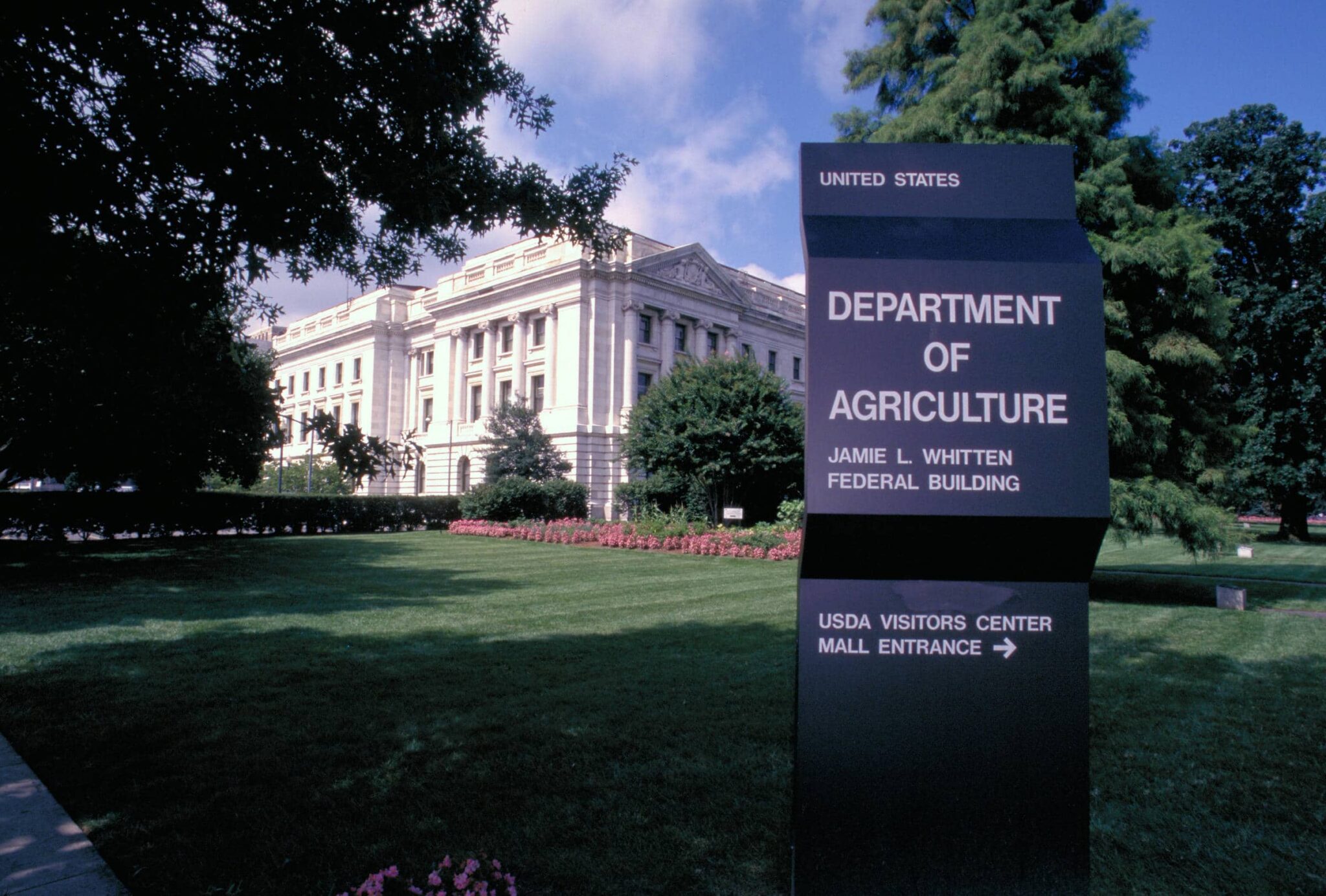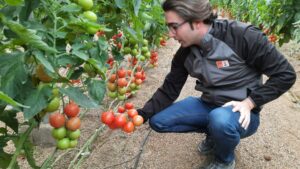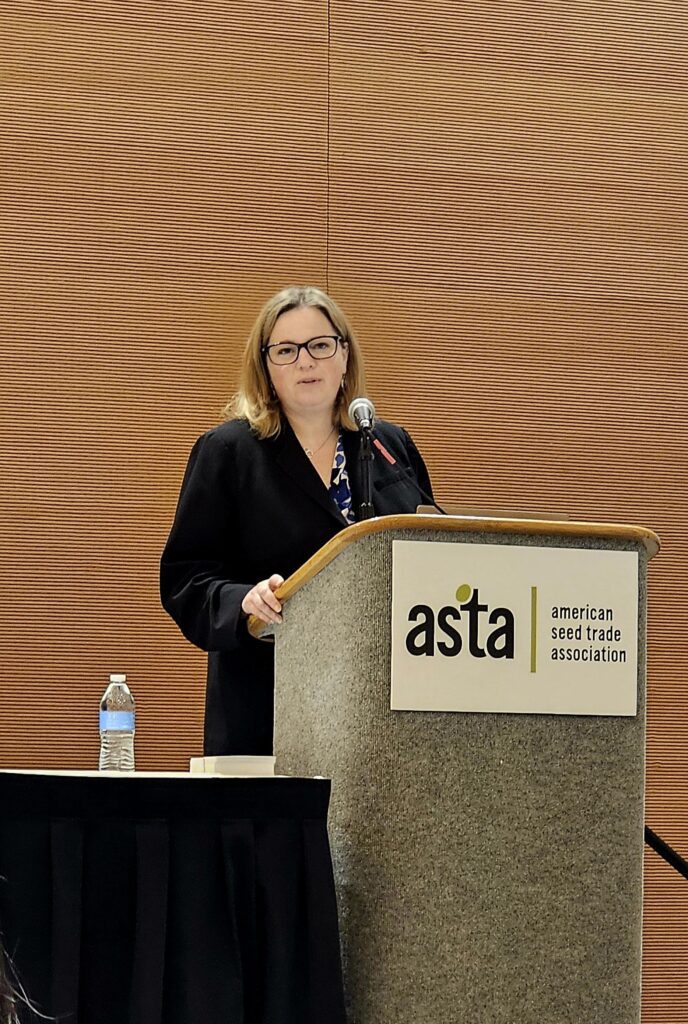It’s been quite a while since the US first drafted its Coordinated Framework that articulates how the products of biotechnology are regulated in the United States. More than 30 years have passed since the three federal agencies, that deal with agricultural products of biotechnology — USDA APHIS, EPA and the FDA — sat together and decided what they thought was the best way to protect public health and the environment. But a lot has changed on the technical side, so it was time for revisions. We sat down with Fan-Li Chou, Biotechnology Coordinator advising the Secretary’s Office at USDA for her take on the background of the revision of the USDA regulations, and an outlook on some of the proposals.
ES: In a nutshell, how does the US regulate biotech?
Fan-Li Chou (FLC): Since 1986, three federal agencies, the United States Department of Agriculture’s Animal and Plant Inspection Service (USDA APHIS), the U.S. Environmental Protection Agency (EPA), and the U.S. Food and Drug Administration (FDA), have provided oversight of products of biotechnology under the Coordinated Framework for Regulation of Biotechnology. The Coordinated Framework is based upon existing laws designed to protect public health and the environment. The three agencies wrote regulations, policies, and guidance to apply the applicable laws to particular products of biotechnology, to ensure that they are safe for use on farms, safe to consume as food or feed, and safe for the environment.

ES: Why was it necessary to modernize these current regulations?
FLC: Originally drafted in 1986, the Coordinated Framework outlined a policy approach for a regulatory framework to ensure health and environmental safety and maintain sufficient regulatory flexibility to avoid impeding innovation. The Coordinated Framework anticipated that future scientific developments would lead to further regulatory refinements in response to the experience gained by the industry, the scientific community and the regulatory agencies. The Coordinated Framework was updated in 1992, and more recently in 2017.
[tweetshare tweet=”The revisions across the government agencies need to be risk proportionate, avoid arbitrary or unjustifiable distinctions, ensure public confidence, and promote future innovation.” username=”EuropeanSeed”]
In combination, the 2016 National Strategy for Modernizing the Regulatory System for Biotechnology Products (Strategy) and subsequent June 2019 Executive Order on Modernizing the Regulatory Framework for Agricultural Biotechnology Products (EO) requested USDA APHIS, EPA, and FDA to examine and revise relevant agricultural biotechnology regulations and guidance to ensure that they are risk proportionate, avoid arbitrary or unjustifiable distinctions across like products developed through different technologies, ensure public confidence, and promote future innovation. Each agency is currently working through implementing the directives of the EO.
For USDA APHIS, we published a proposed rule on June 5, 2019, titled “Movement of Certain Genetically Engineered Organisms”. The proposed rule is intended to revise the regulation to enable USDA APHIS to focus its regulation on those biotech organisms that are likely to pose plant pest risks in a manner that balances oversight and risk, is based on the best available science, and aligns with the EO, which calls for, among other things, regulatory streamlining in order to bring products of agricultural biotechnology to the market efficiently, consistently and safely.
ES: Which are the key issues and challenges you’re facing?
FLC: We believe that improved international regulatory compatibility is needed for agricultural products of biotechnology, including products of precision breeding innovations (such as genome editing). Compatibility is needed both in approach and timing of decisions to avoid trade disruption and to foster agricultural innovation. We encourage countries to implement policies that are risk-proportionate, that encourage scientific innovation without creating unnecessary barriers or unjustifiably stigmatizing products of new technologies.
In November 2018, the United States joined with 12 other nations to support the International Statement on Agricultural Applications of Precision Biotechnology which was introduced by Argentina at the World Trade Organization (WTO) Committee on the Application of Sanitary and Phytosanitary Measures.
[tweetshare tweet=”Science-based advances in biotechnology have great promise to enhance rural prosperity and improve the quality of life across America and around the globe.” username=”EuropeanSeed”]
We need all the tools available in the toolbox to meet the challenges of global food security; sustainable and resilient agriculture. Science-based advances in biotechnology have great promise to enhance rural prosperity and improve the quality of life across America and around the globe.
ES: How does the USDA go about ensuring sufficient stakeholder input?
FLC: In advance of drafting and publishing the proposed rule, USDA APHIS met with more than 80 organizations, including 17 universities, State Departments of Agriculture, and farmer organizations to seek their views and input. USDA APHIS also sought input from the public by conducting three public hearings across the United States and by publishing a Notice of Intent for public comment. Finally, the proposed rule was open for public comment for 60 days.
Internationally, USDA shared rationales, experience and information for potential regulatory changes with US trading partners, like-minded countries and other countries, to garner understanding and support for the proposed updated approach. The WTO was notified of the proposal and comments were invited when it was published. APHIS intends to continue its engagement internationally on the proposed regulatory revisions.
ES: In June 2019, the USDA proactively proposed a rule. What were the main differences with the current regulations?
FLC: Some key highlights of the proposed rule are as follows:
- To exempt certain categories of modified plants because they could be produced through conventional breeding techniques and thus are unlikely to pose a greater plant pest risk than conventionally bred crops, which APHIS has historically not regulated.
- To exempt modified plants with a plant-trait-mechanism of action (MOA) combinations that we have already evaluated and shown not to present a plant pest risk. Similar plants will subsequently be exempt from regulation.
- Set forth a regulatory status review process to determine the need for regulatory oversight by appraising the plant pest risk posed by modified plants by evaluating (1) the basic biology of the plant prior to modification; (2) the trait that resulted from the genetic modification; and (3) the biochemical mode of action conferring the trait. For this purpose, an Initial Review will be conducted to identify plausible pathways by which a particular modified plant could directly or indirectly present a plant pest risk through injury, disease, or damage to plants or plant products. If one or more plausible pathways to plant pest risk are identified, a Plant Pest Risk Assessment (PPRA) will be completed to characterize the potential for plant pest risk.
ES: What are the next steps, and when could we see the approval of the revisions?
FLC: We received over 6,150 public comments to the proposed rule. We are in the process of reviewing and considering these comments as we prepare the final rule. In the interim, we continue to operate under our existing regulation clarified by the Secretary of Agriculture’s March 28, 2018, statement that USDA does not plan to regulate plants that could otherwise have been developed through traditional breeding techniques as long as they are not developed using plant pests.
Such products of biotechnology are likely to pose no greater plant pest risk than their traditionally bred comparators, which APHIS does not regulate. USDA currently has a system in place, the “Am I Regulated?” (AIR) process, which allows the interested parties to seek confirmation of regulatory status of a genetically engineered organism from USDA. Guidance for submission, as well as AIR letters of inquiry and APHIS responses are available online (https://www.aphis.usda.gov/aphis/ourfocus/biotechnology/am-i-regulated). Since 2011, we have reviewed and responded to over 80 AIR letters of inquiry, of which over 80% have come from academic and small business. Many developers have used this process to inquire on the regulatory status of genome edited varieties.













